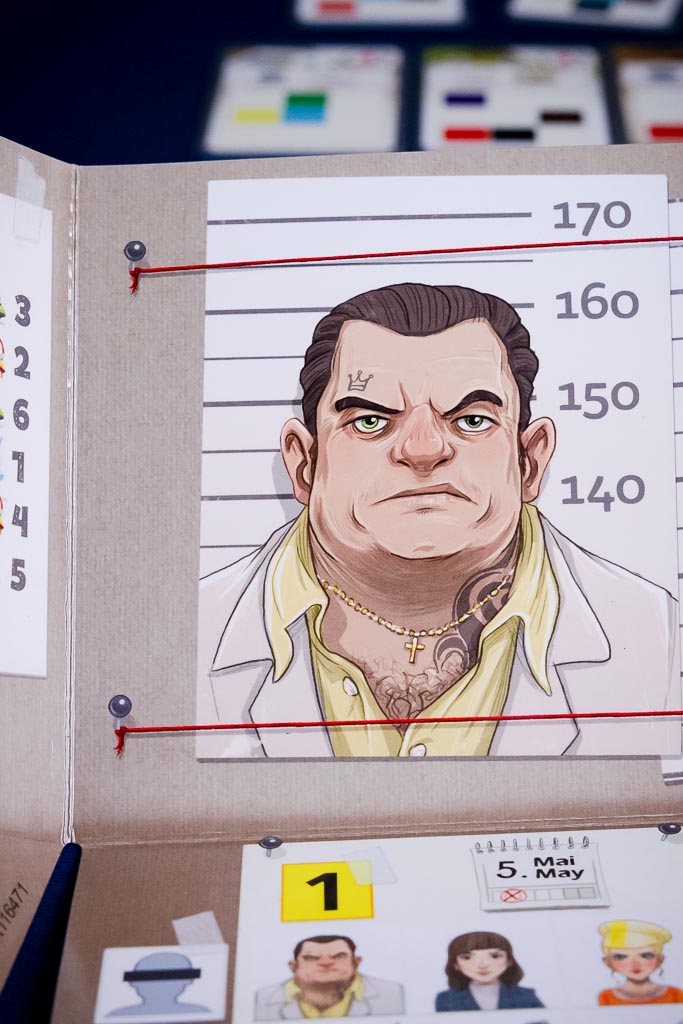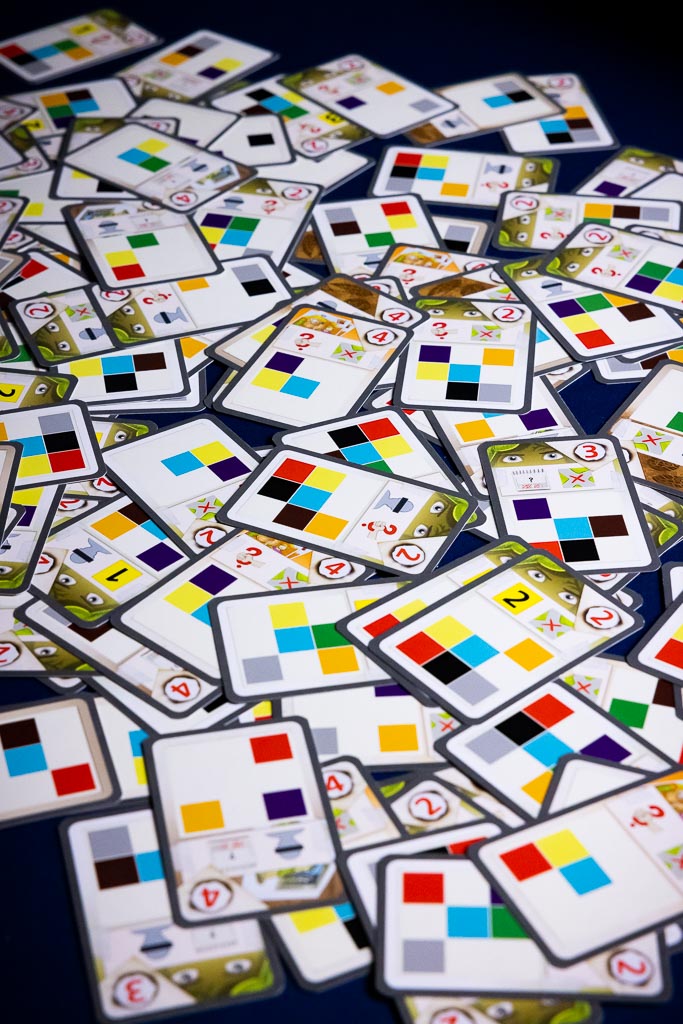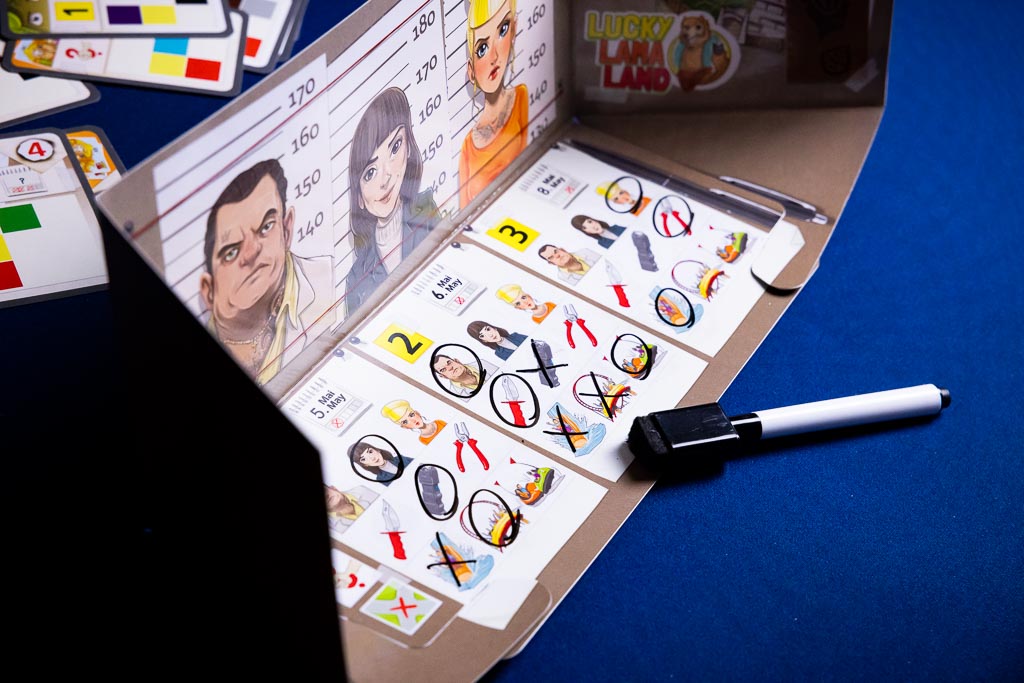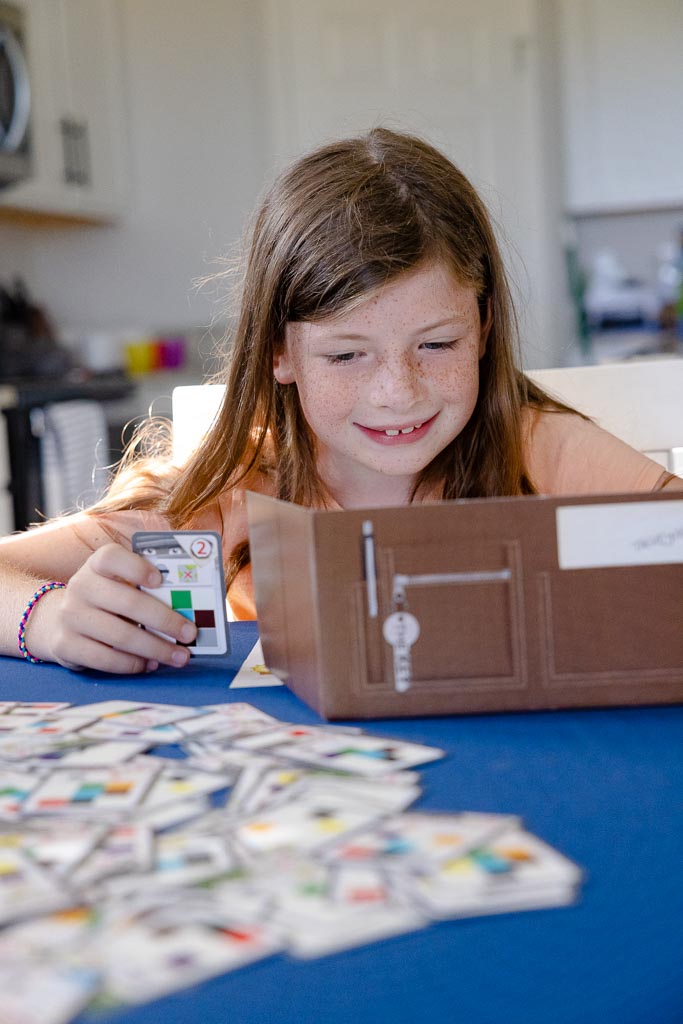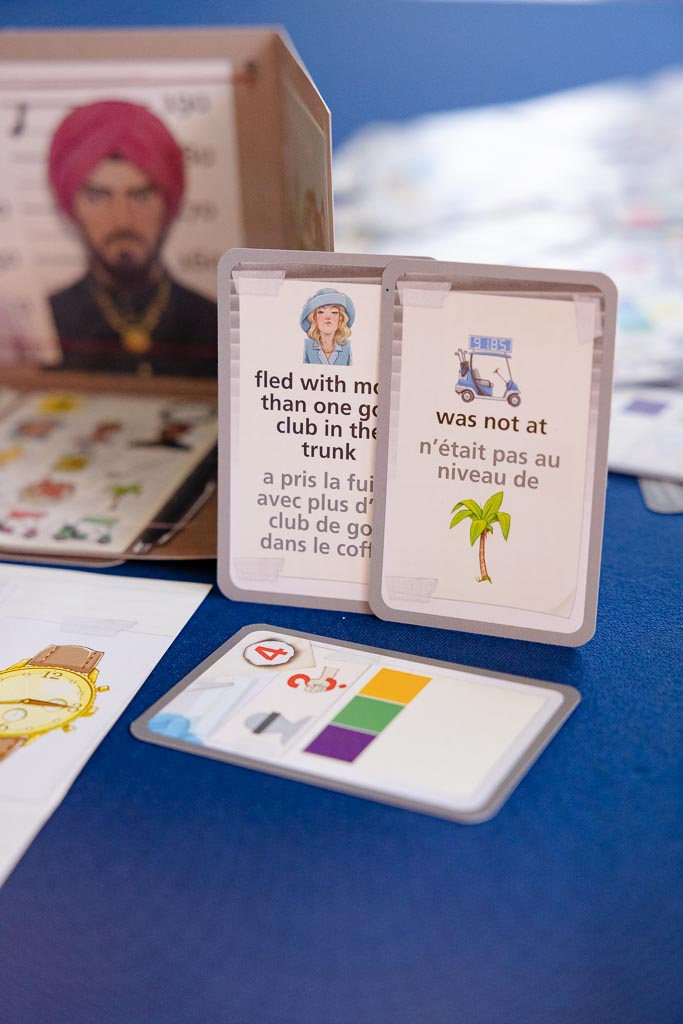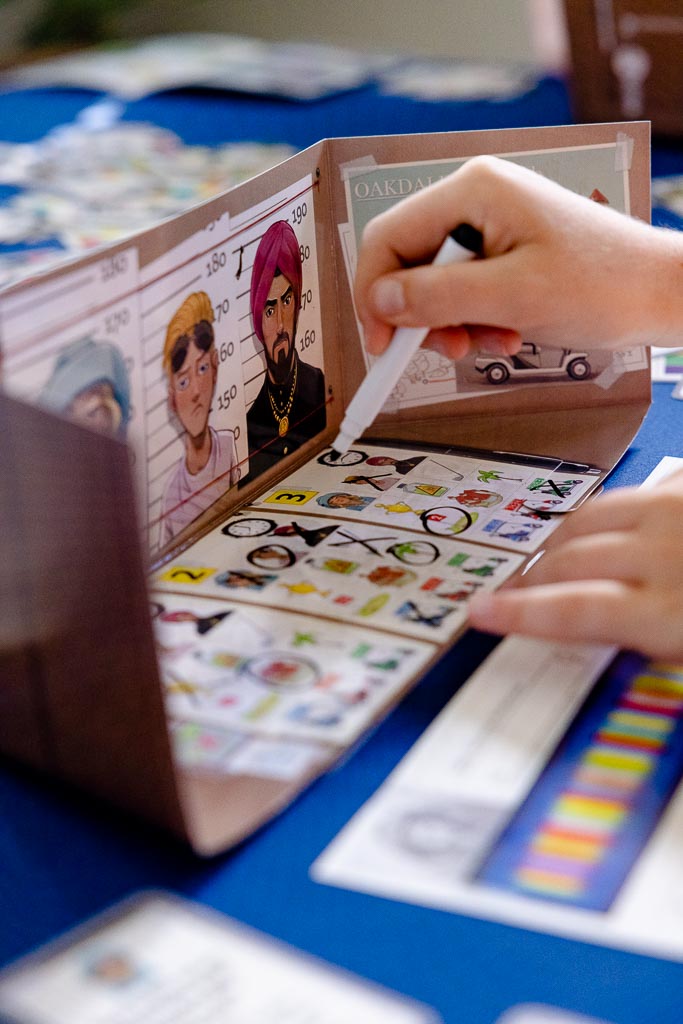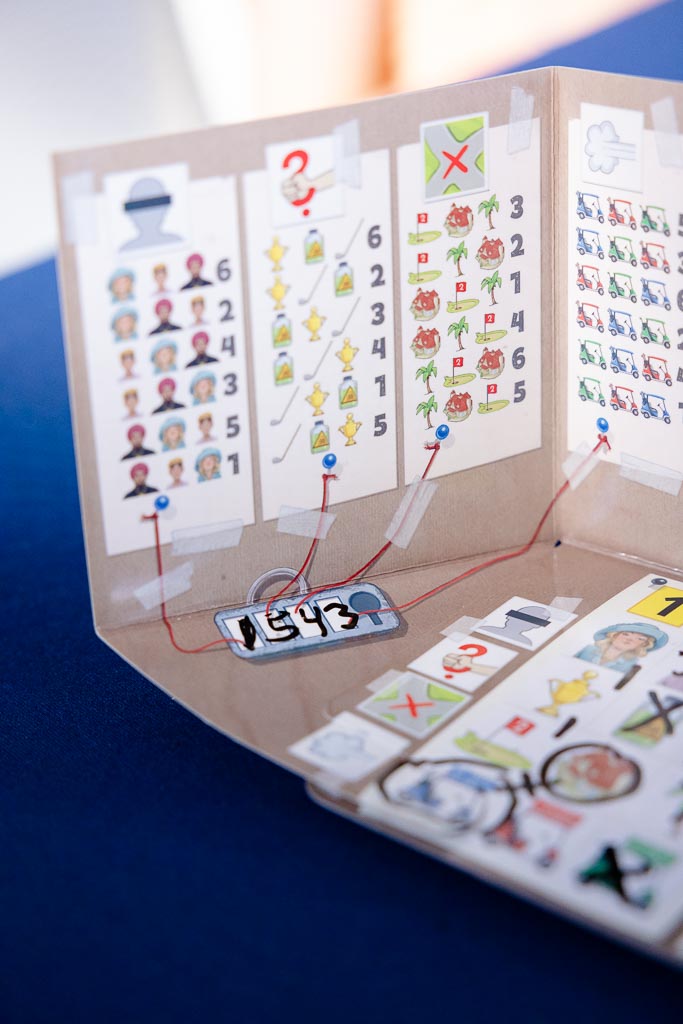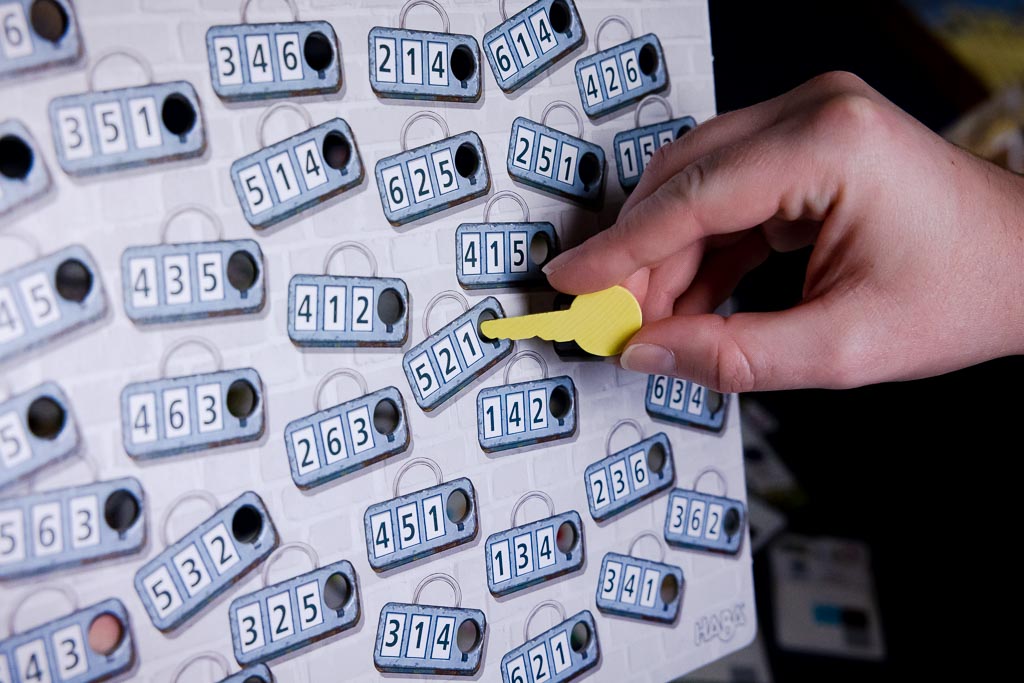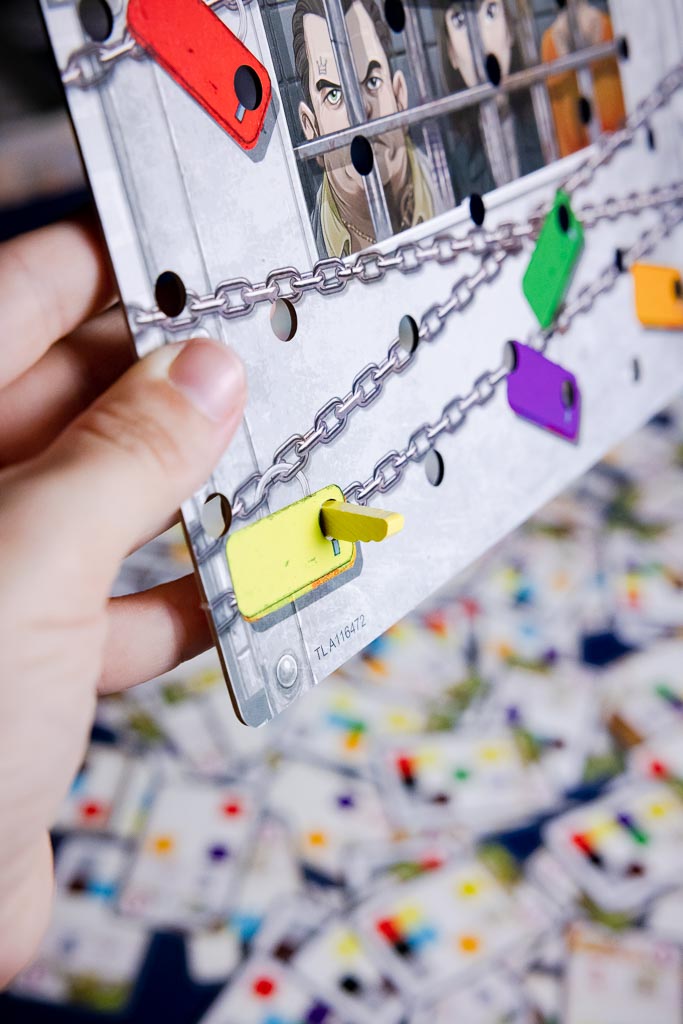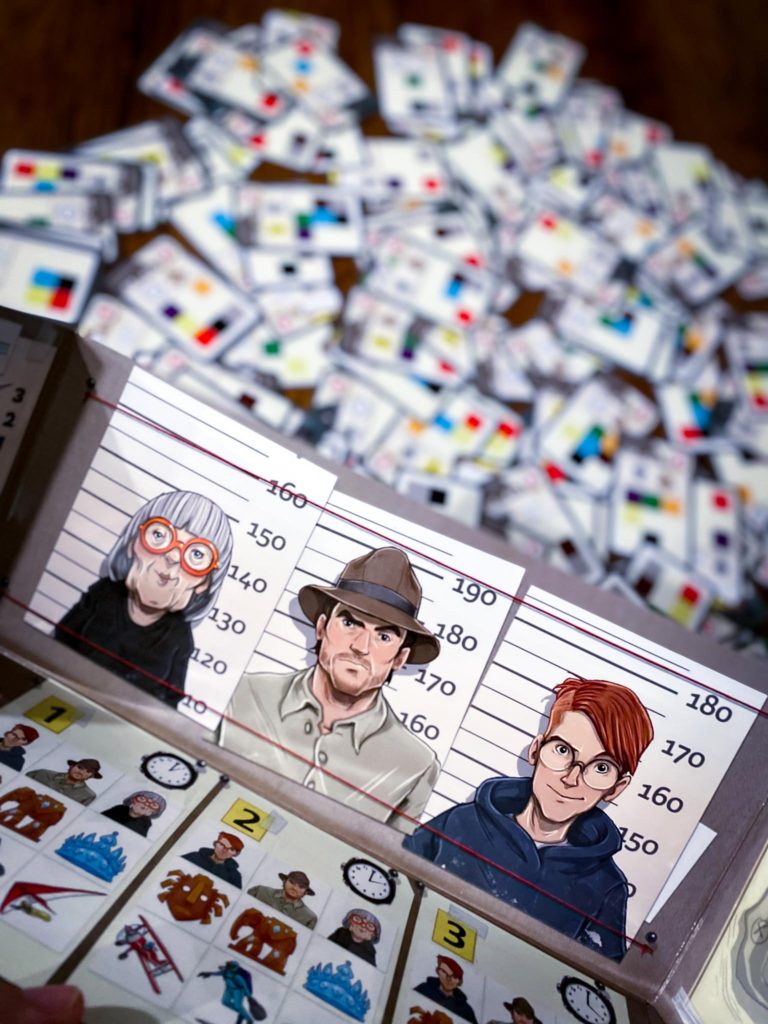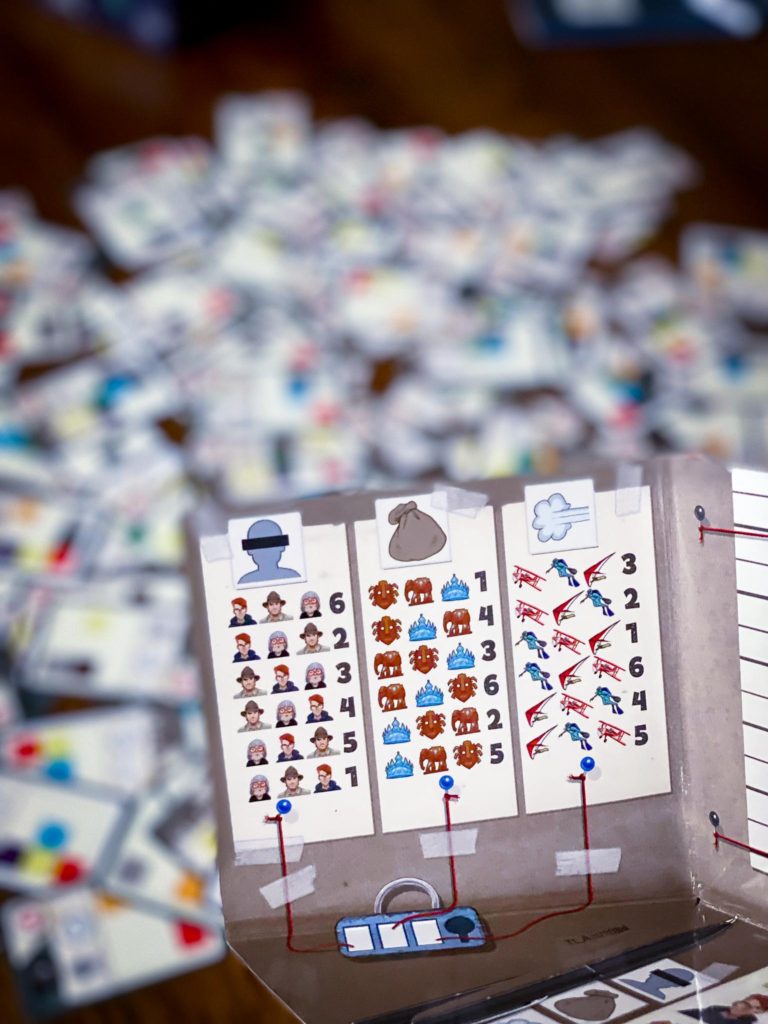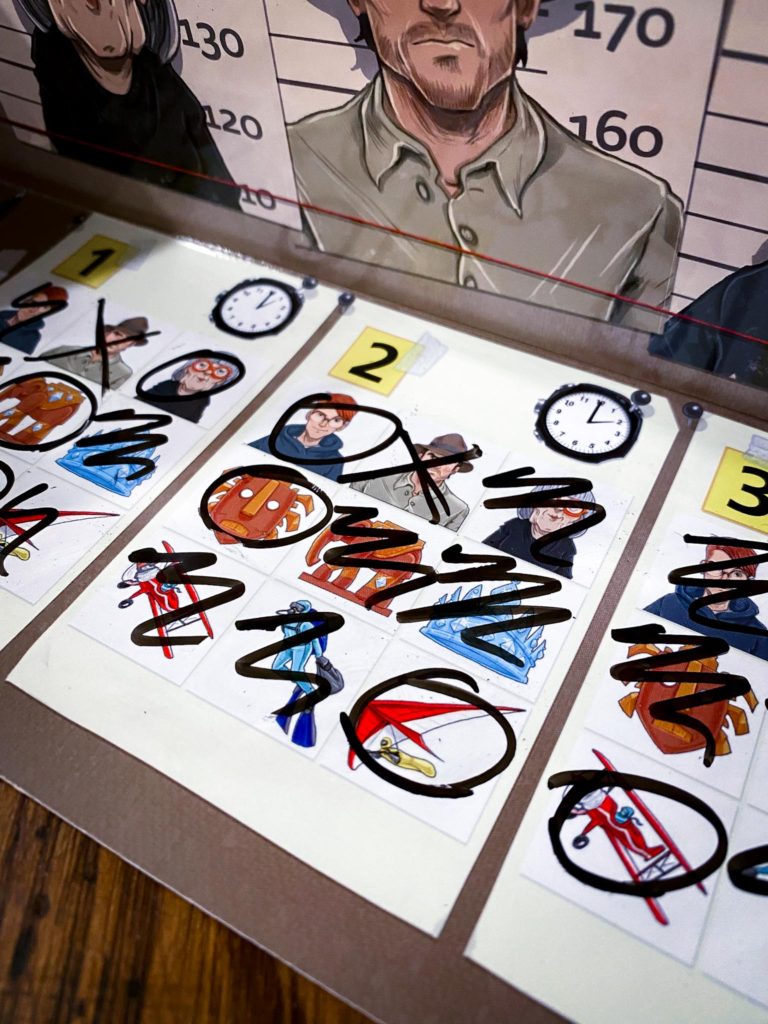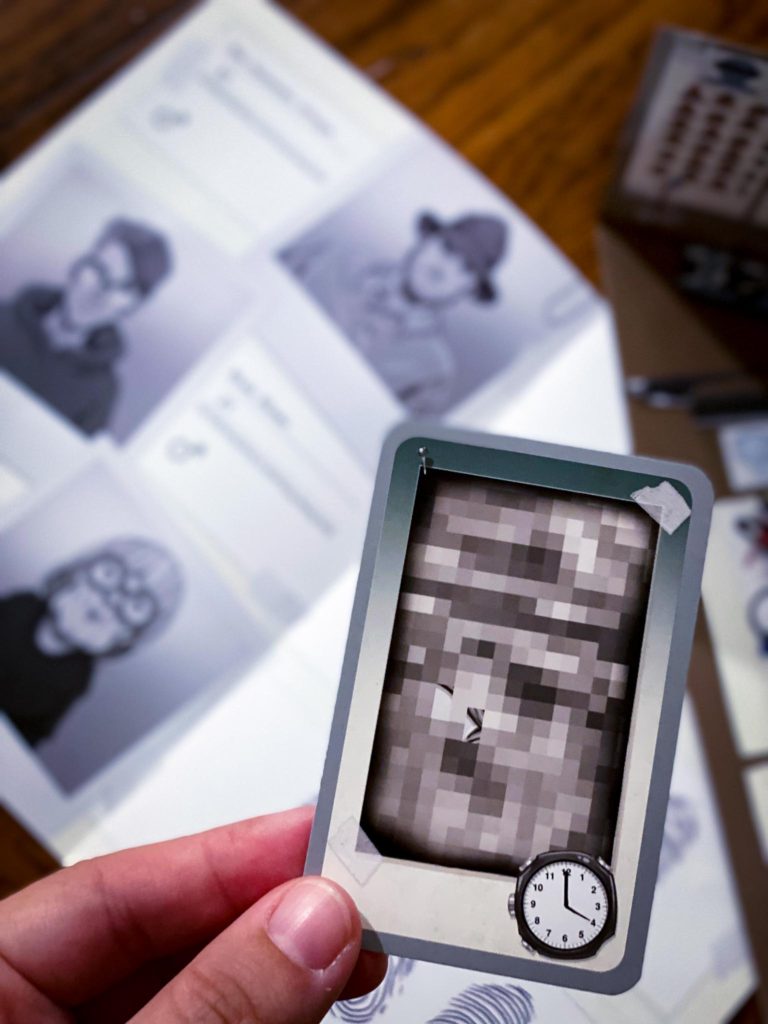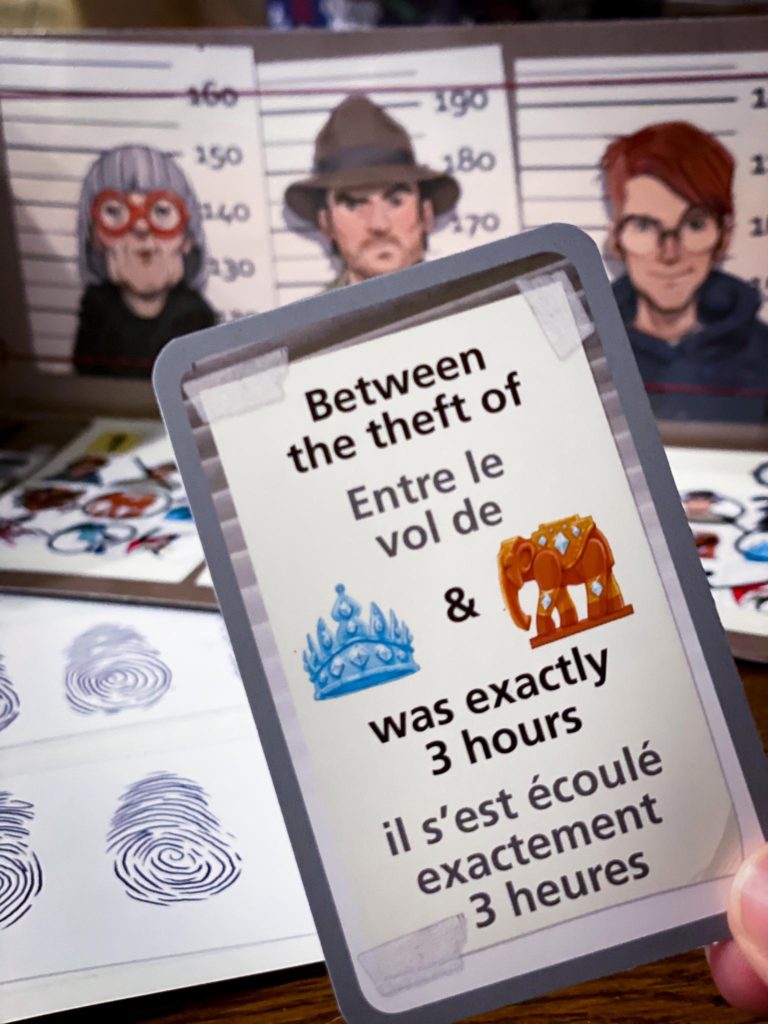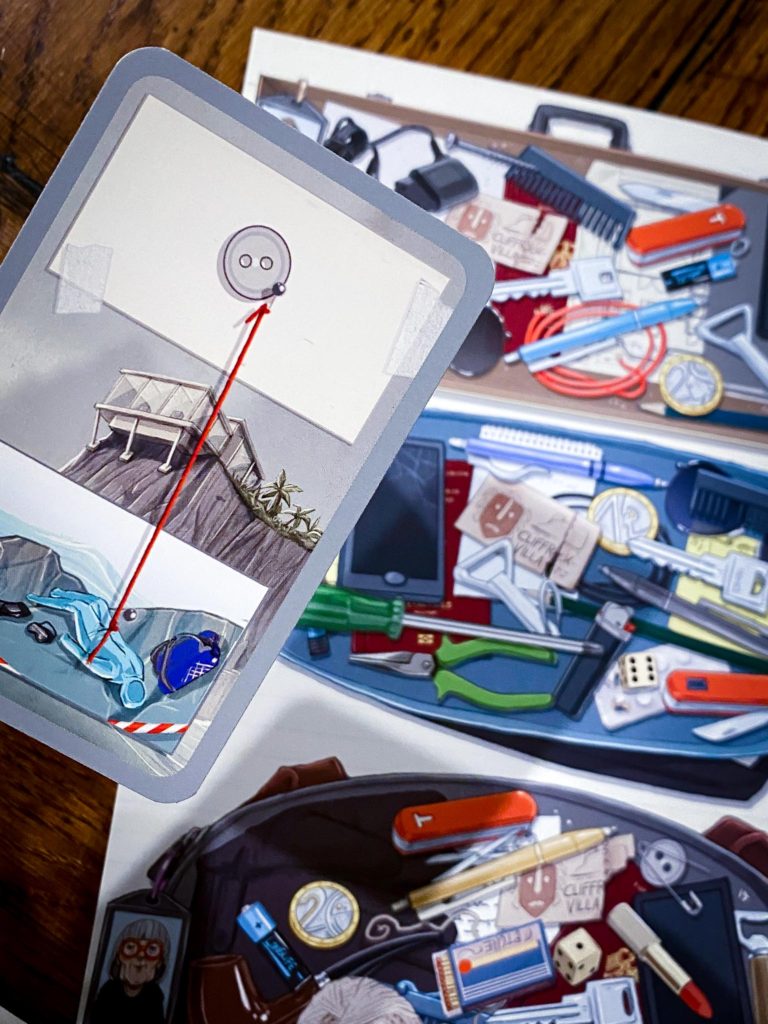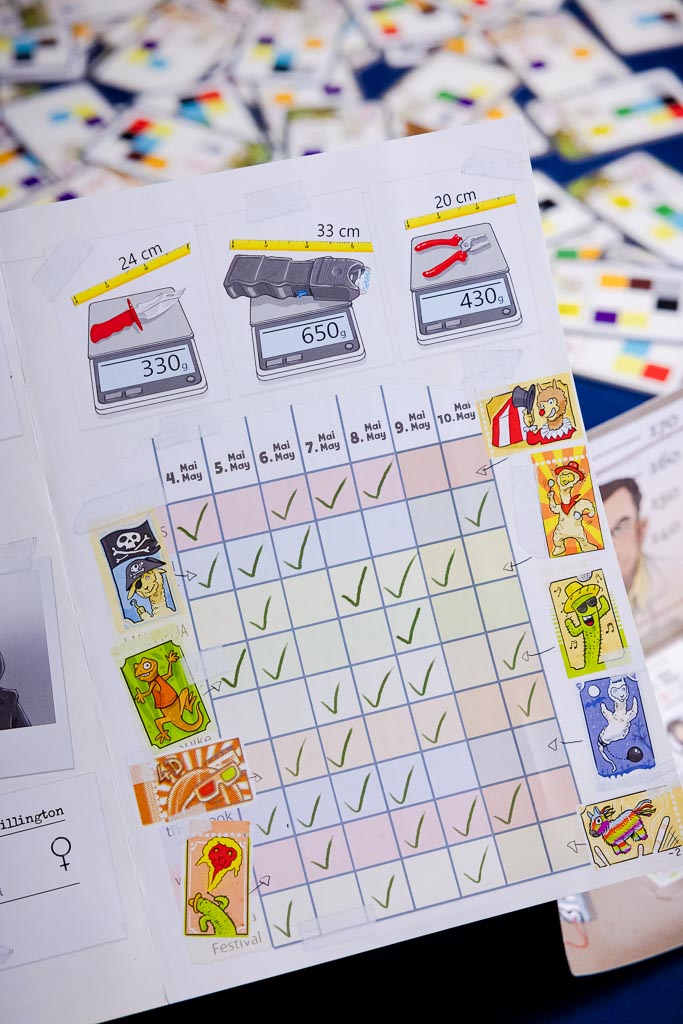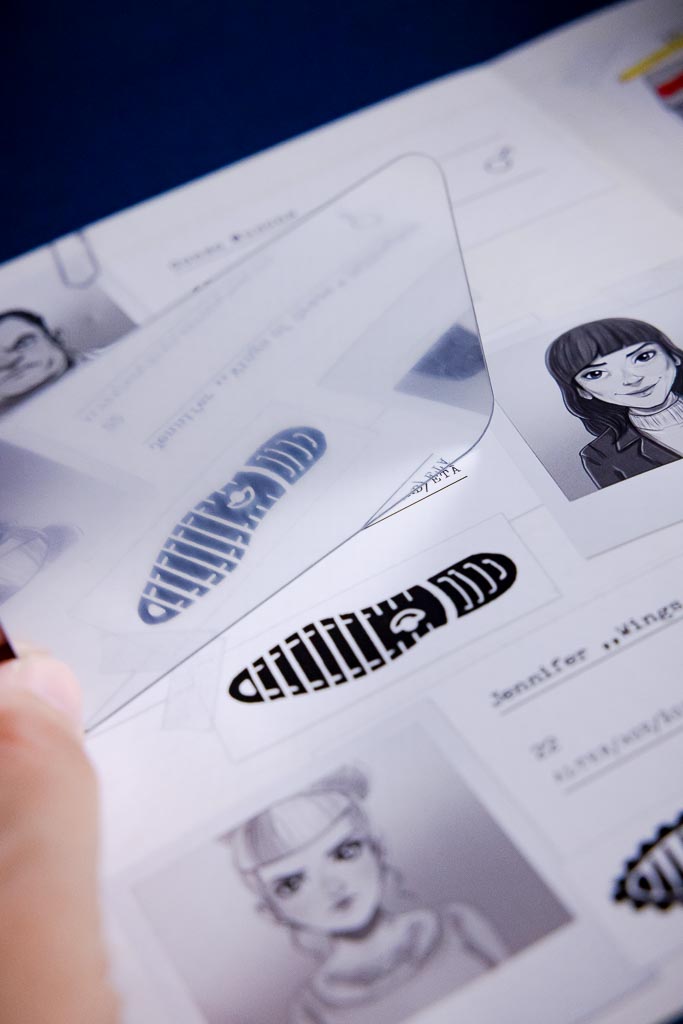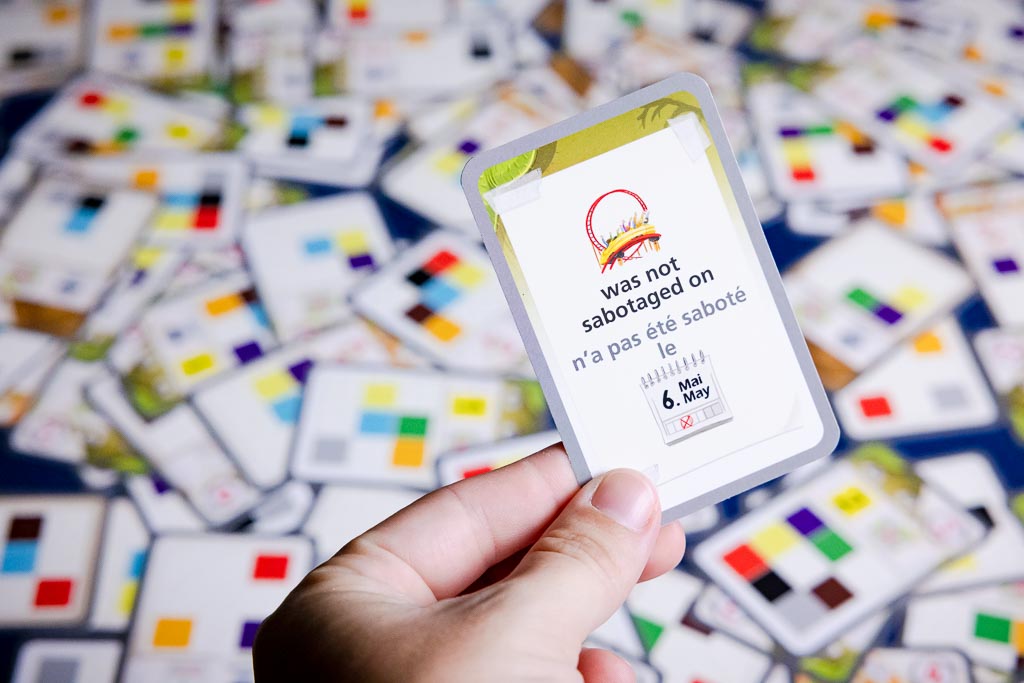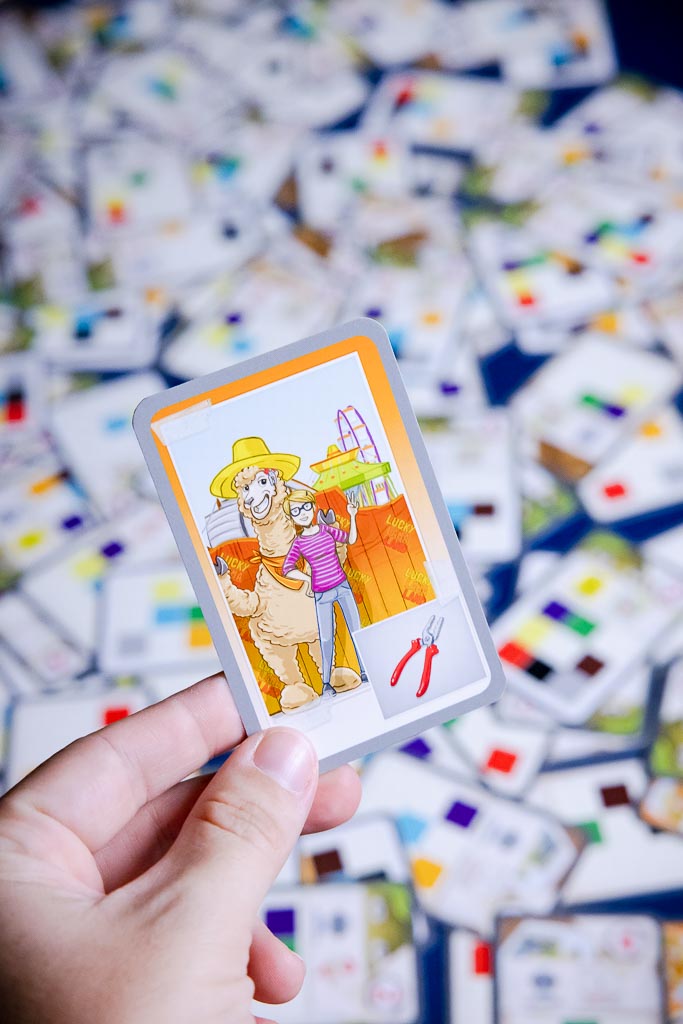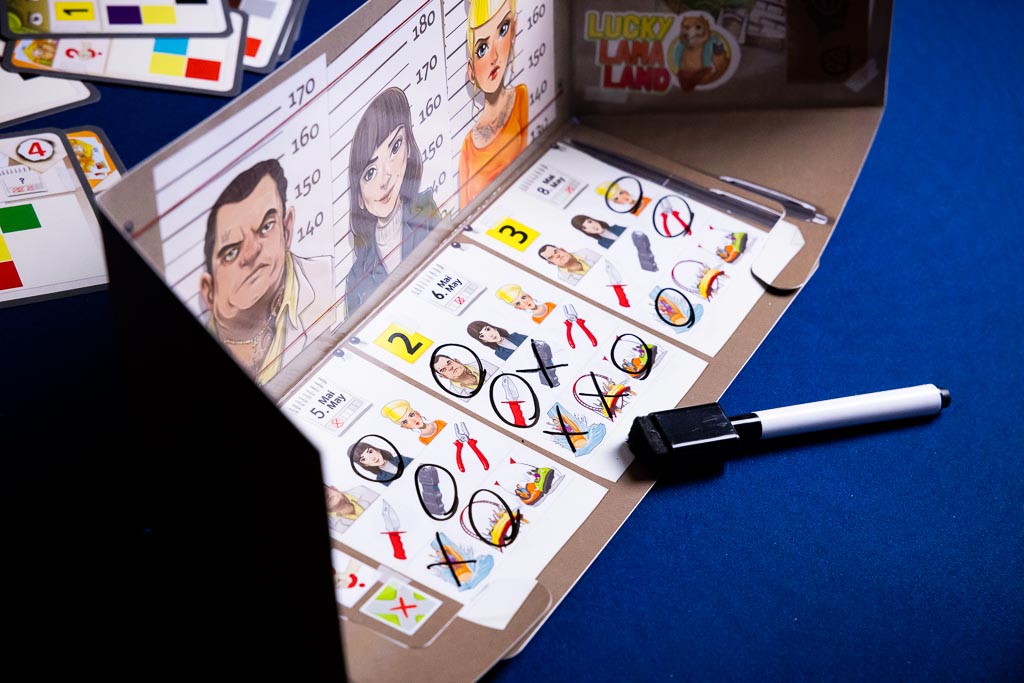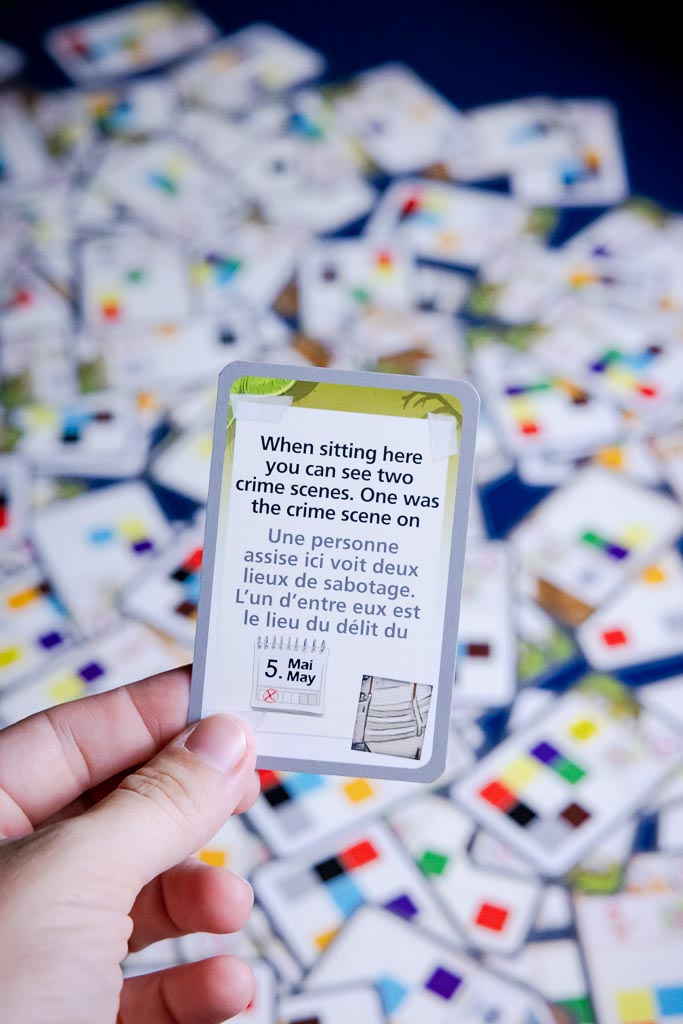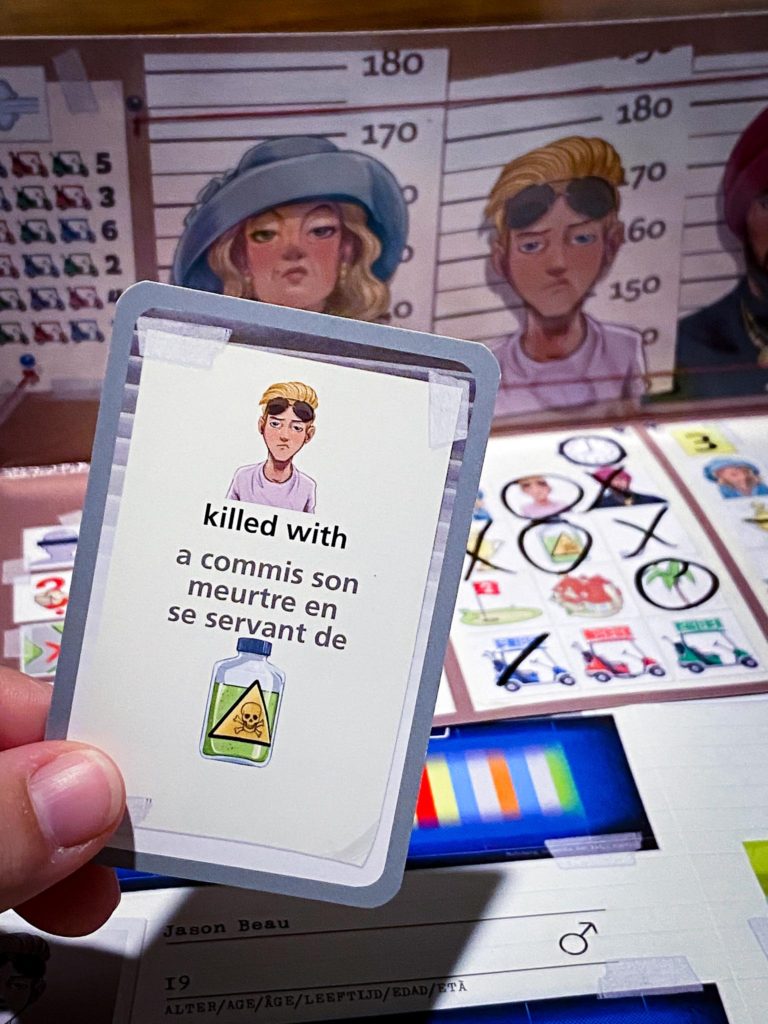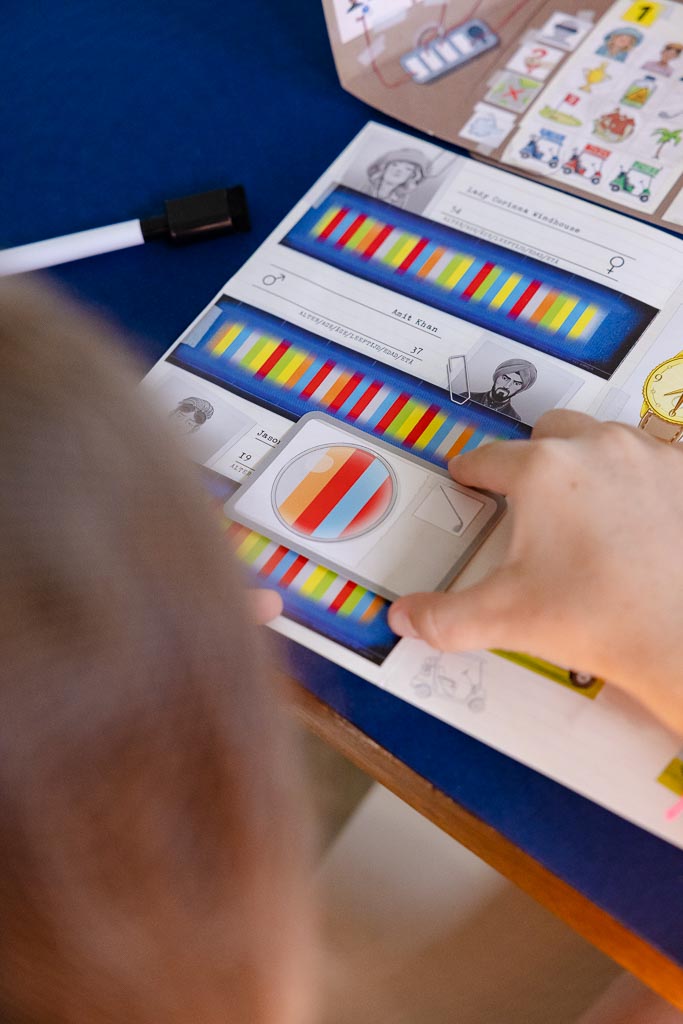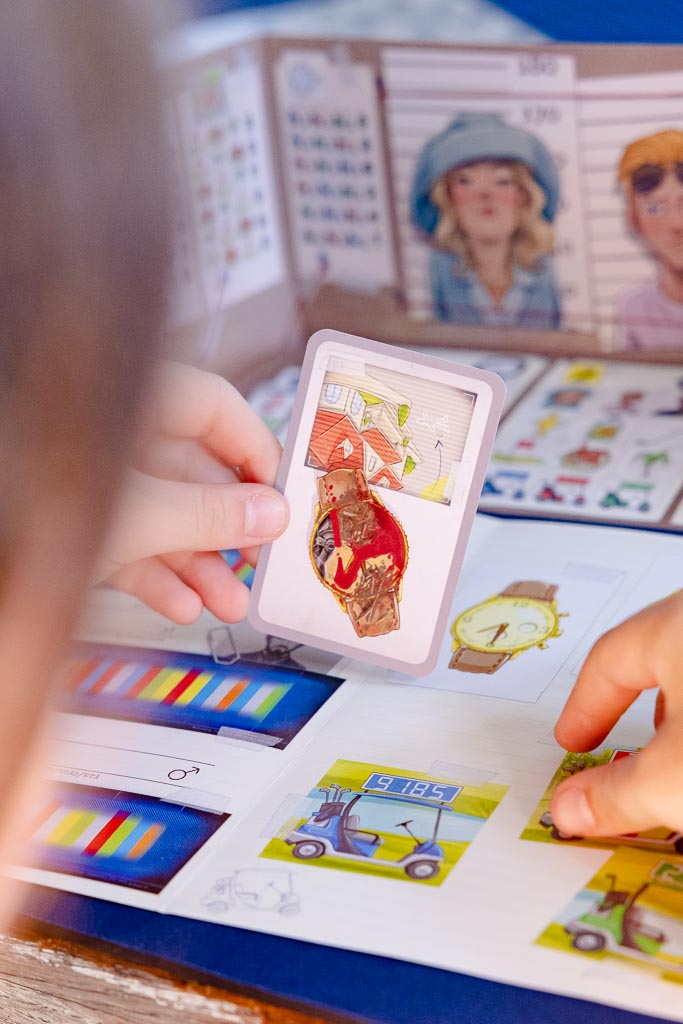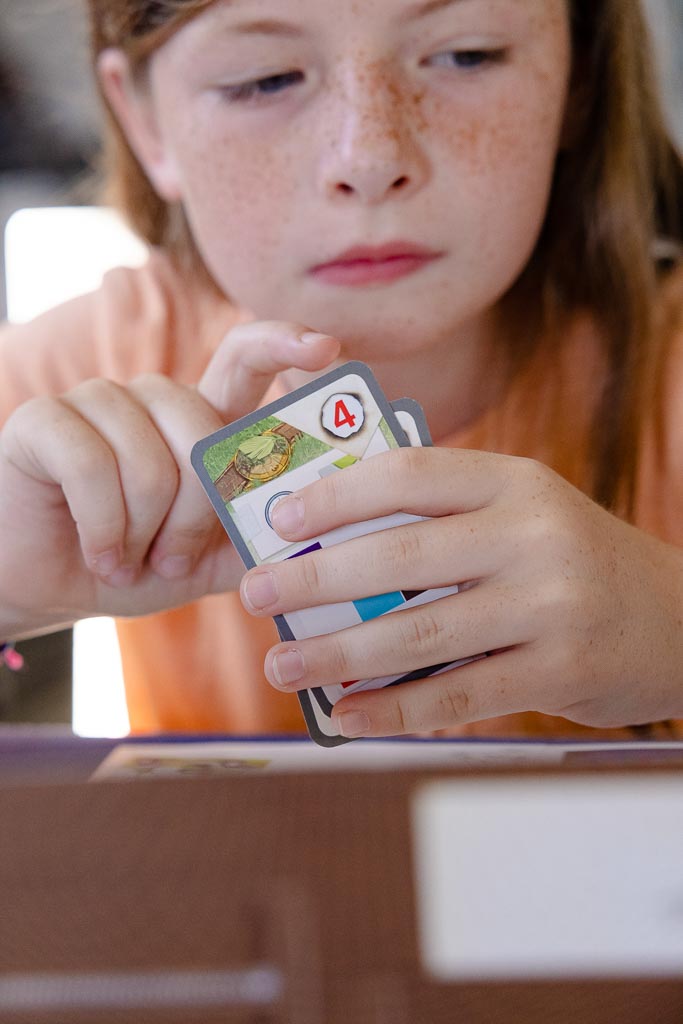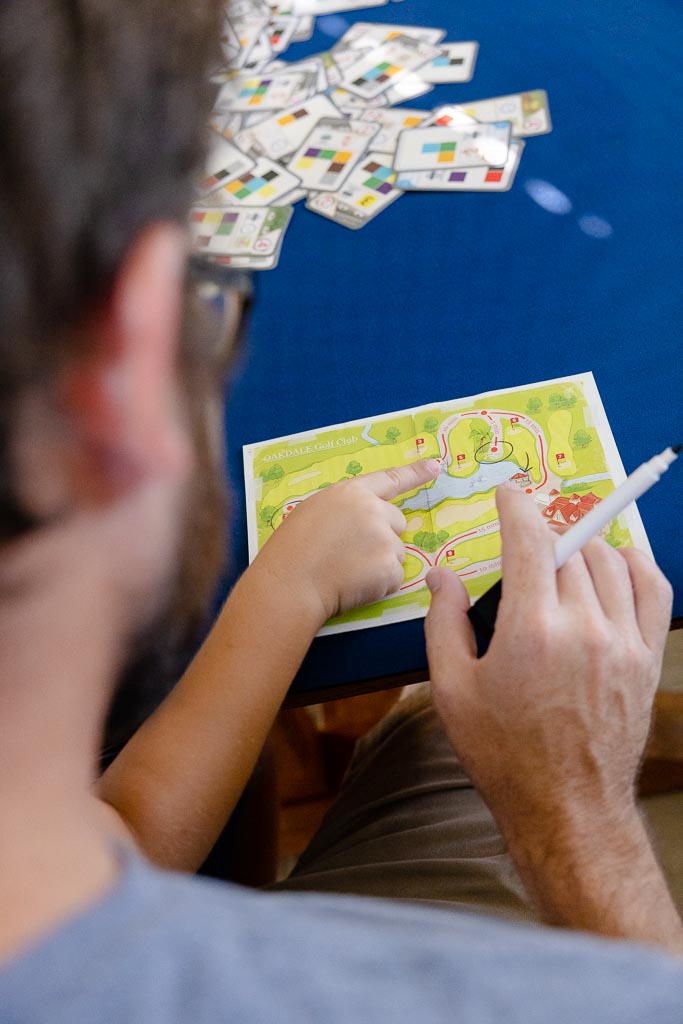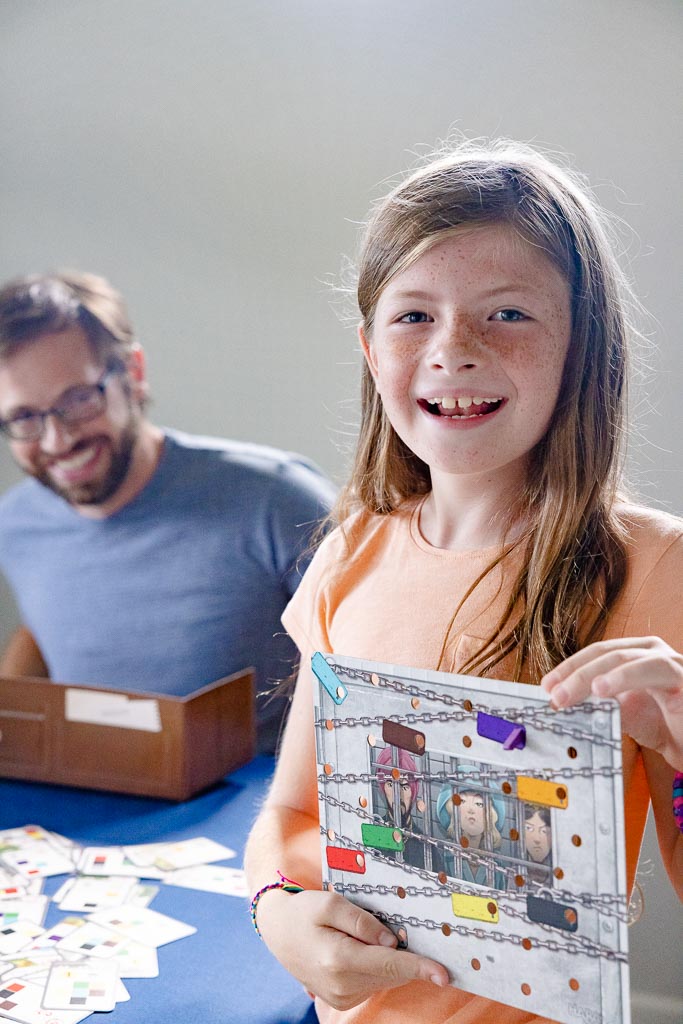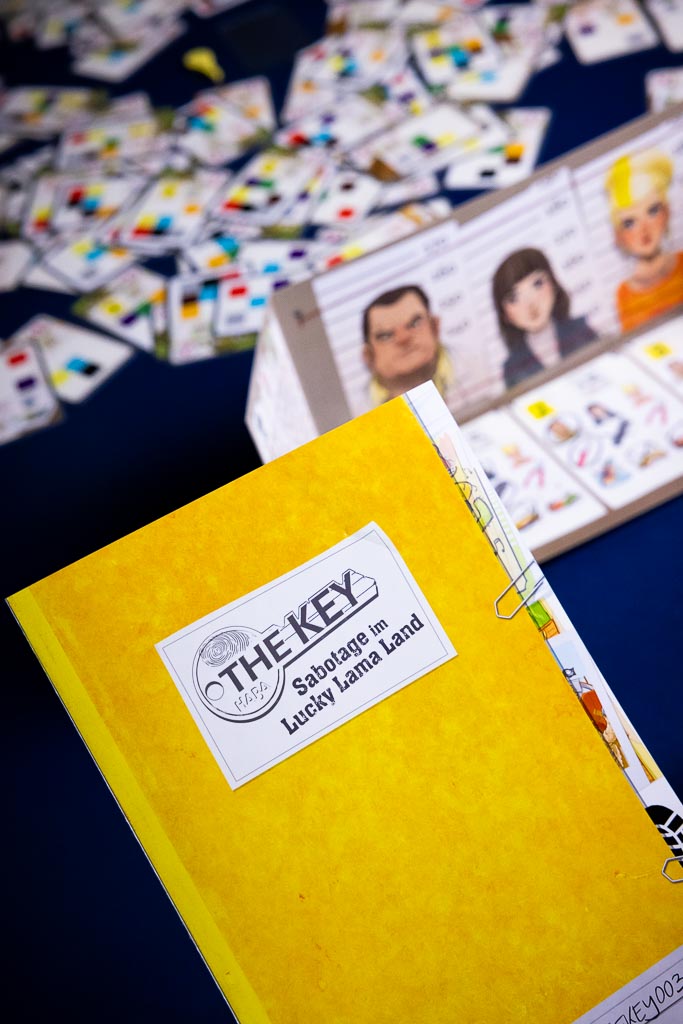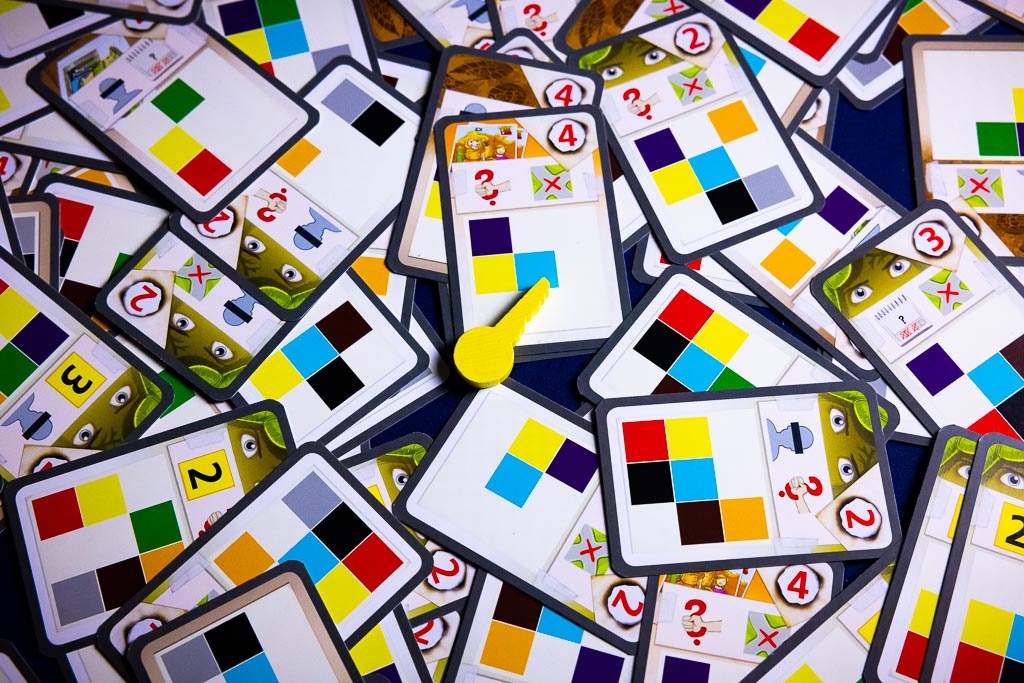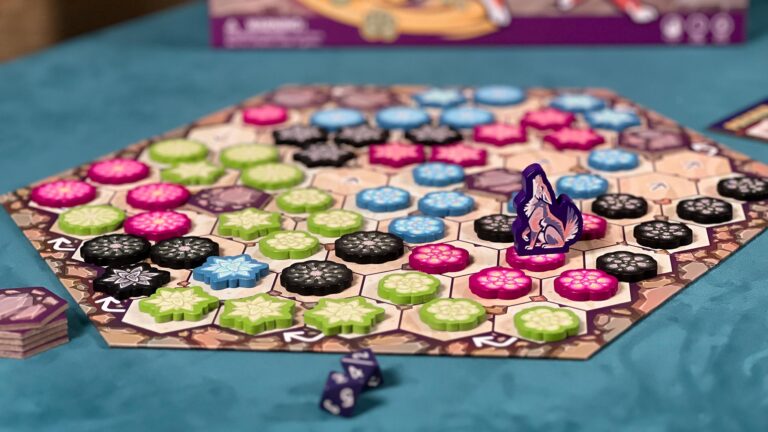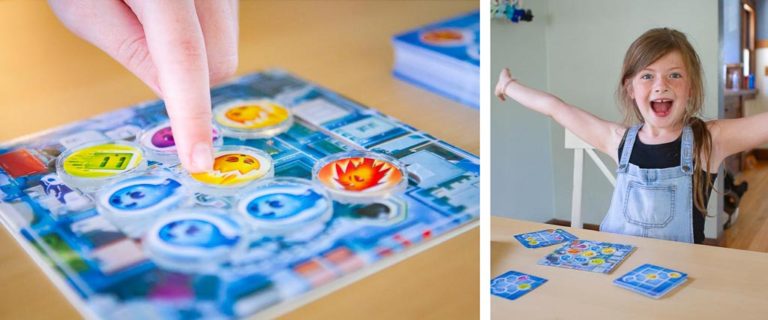I’m breaking down the new logical deduction game series The Key! This series from HABA will have players working individually to crack the case by examining clues to solve thefts, sabotage, and yes, even murder! (I hope you read that in an ominous voice, because I most definitely said it in an ominous voice.)
How Do You Play The Key?
The Key is a logic gaming series where players will try to solve mysteries faster than their opponents by collecting clues about the days of the crimes. Players will need to generate the correct number code to use the key to correctly solve the crimes.
Each case involves three suspects and each committed a crime on a specific day that you’ll solve at the same time by looking at clues from the cards in the middle of the table.
To begin, choose which case color you’d like to solve from the 9 options and place that key color in the center of the table with the clue cards around it.
The Key has no rounds. Players play all at the same time by selecting clue cards until they believe they have solved the case. Players may finish at different times.
The clue cards are all spread out in a central pile that players can sift through looking for the correct type of clue they need. The backs of the clue cards show you the case colors they correspond to. Only choose cards that have your case color on them otherwise you’re getting the wrong clues. The back also shows which type of clue it is — it could be about the suspect, the day or time the crime took place, or perhaps the weapon used. Choosing clues that correspond to the exact type of information you need to find out will help you solve the case more efficiently.
Players interpret the clue cards through a process of logical deduction. Example: if a clue card says that the red golf cart was the getaway car directly before the green golf cart, you can eliminate the green golf cart from the first case and the red golf cart from the last case.
The first player who thinks they solved the case stops and grabs the wooden key from the center of the table.
End Of Game
When all players feel they have solved the cases, they look at their board and generate a number code corresponding to the order of each of their line items. The player who solved the case first places the key into the hole in the board that matches the code their results generated. If the code was correct, the key will poke through into the space with the same color as the key on the backside of the board. If not, then that code is incorrect.
Players who correctly solved the code count up their points from their clue cards. The player who grabbed the key gets to subtract 2 points from their final score for being the first to solve the case.
Then the player with the lowest score is the winner.
What Do We Think?
The Key is an excellent logic game series.
This is an instant recommend from me. If you have kids that love to solve puzzles or you are looking for a game to challenge their critical thinking skills The Key series is a perfect choice.
Players need to have decent reading skills in order to play The Key. The independent ability to read and interpret the clue cards is a must as players work on their own in solitaire fashion. While there is iconography, you still need to be able to read each card. This is not a language independent game.
That combined with the necessarily amount of critical thinking skills to be successful, I’d say players would need to be at least 8 in order to enjoy this one to the best of their abilities. I love this as an option for kids in that 9-10 age range. These ages seem to straddle the line between kid games and bigger games. The Key is both easy enough for them to confidently play while remaining a challenging logic puzzle to figure out.
The Key is fun for adults too — not just kids! As adults, we’ve enjoyed playing the cases on our own without our daughter as much as we have with her. There’s something so fun about solving a purely logical puzzle. I’m a huge fan of logic puzzle books and this game scratches that same itch. That said, they aren’t terribly difficult. I wouldn’t recommend this game if it is going to be just for adults.
Simultaneous Yet No Rush
I love the simultaneous nature of it. You’re not waiting for someone to take their turn or feeling rushed as everyone watches you take yours. You’re free to take your time and thoughtfully consider each clue for however long you’d like which is great. The winner is the most efficient detective, not the fastest.
While the game isn’t a race, you do still feel a push to solve everything quickly. Maybe its just our competitive natures but even though we know the winner isn’t necessarily the player that solved it first, we still want to be that person.
Interestingly, we found that the best strategy was to select the lower value witness statement cards (2pts) rather than the higher lab cards (4pts). It is not difficult to solve the case with a handful of 2 pt cards. Players who take this strategy often end up winning. This is a bummer due to the fact that the lab cards are the most fun to solve. These are the cards that challenge you the most and make you feel the cleverest when you figure them out.
I do wish they included more than 9 cases. However, due to the lack of a narrative, it is easy to forget the number code generated. You can even forget it immediately after playing — we did!
Breakdown of Each Game in The Key Series
I want to give a quick run down of the three games as well as our thoughts on each one.
While the games play the same, they each have unique lab clues that set them apart from the others.
The Key: Theft in Cliffrock Villa
Players are trying to solve a string of robberies at an art exhibition in the famous Cliffrock Villa. Players will need to figure out Who stole what, when they did it, and how they escaped by combining clues about the perpetrators, time of the crimes, stolen items, and escape plans.
Unique Lab Cards:
- Fingerprint Cards
Closely fingerprints found on the stolen items with those of the perpetrators to discover who the fingerprint belongs to.
- Surveillance Camera Cards
The surveillance camera is defective, leaving only the smallest sliver of image for you to see. Use this small portion of an image to match it with a perpetrator.
- Found Object Cards
An object was found at the scene. Examine the bags of the perpetrators to see which one had that object in their bag when they went through the security checkpoint and had their bag x-rayed.
Our thoughts on Theft in Cliffrock Villa
I enjoy the art heist theme of this game. The lab cards are pretty easy to interpret which is both nice so there’s little confusion but also doesn’t provide much of a logical challenge. The lab cards point directly to one perpetrator, so you are getting a solid piece of information every time you grab one.
Theft in Cliffrock Villa feels like the easiest game of the three.
The Key: Sabotage at Lucky Llama Land
Players are trying to figure out who sabotaged attractions at the Lucky Llama Land amusement park. Players will need to figure out who sabotaged what attraction, what day they did it, and which tool they used.
Unique Lab Cards:
- Shoe Print Cards
Using a mirror (provided,) you’ll examine shoe prints found at the scene with those of the perpetrator. The correct shoe print will be an identical match while the incorrect shoe prints will have very slight differences players will have to look for to rule them out.
- Show Ticket Cards
These cards show tickets for specific shows. Players will look at the show time booklet and check which day all of those shows were available to rule out which days a perpetrator could or could not have been at the park.
- Snapshot Cards
Snapshot cards show a picture taken at one of the photo points around the amusement park that shows a tool. Players will examine the photograph to see which features are in the background to determine where that photo could have been taken and thus which crime scene a tool was used.
Our thoughts on Sabotage at Lucky Llama Land
This is a really fun theme! The lab cards are a lot of fun to solve. Using the mirror to examine the footprints really lends a detective feel to the game and creates for an exciting reveal — especially on the first game — when you discover the matching print. The show ticket cards are also a great logic exercise for kids. They have all the information they need, they just have to cross check it with the schedule to find the only day those tickets could have all been used. The best part of Lucky Llama Land though are the Snapshot Cards. These are stand outs! To solve these you have to look over the park map and then use your imagination to place yourself at the scene. “What would you see if you took this picture from this direction?” Excellent!
Lucky Llama Land is a manageable challenge but one that is still possible to trip players up if they aren’t paying close attention to the information they have. You have to do a certain level of logical interpretation with the Snapshot Cards rather than getting an exact piece of information.
The Key: Murder at the Oakdale Club
Players are trying to solve a series of murders that took place at the Oakdale Golf Club. Three people were killed on the same day. Players need to figure out which perpetrator used which murder weapon at what time. In addition, players must also discover which golf cart they used to flee the scene of the crime.
Unique Lab Cards:
- Watch Cards
Investigate what time is shown on the bloody watch to deduce which crime scene the murder occurred and at what time.
- License Plate Cards
Solve a number puzzle using the numbers on the license plates to find out which golf cart was used to flee from which crime scene.
- DNA Cards
Compare the DNA sample on file with the DNA trace found on the murder weapon.
- Alibi Cards
Correctly interpret the alibi cards to rule out which crime scenes and times a perpetrator could or could not have been present for. You can rule out certain crime scenes based on a perpetrators alibi.
Our Thoughts on Murder at the Oakdale Club
Though billed as a more difficult game than the former two, Murder at the Oakdale Club is not significantly more challenging. You are just solving four things rather than three. While the alibi cards can be tricky, there are still a bunch of other cards that give you a direct answer rather than requiring a logical deduction.
We really like the license plate cards which provide a great logical number puzzle and some mental math challenges.
What we do not like is the theme. The murder theme was, to put it bluntly, a bad choice. And this is coming from a murder mystery fan — I love me a great game about murder. But I’m an adult. HABA is a family/kid brand and this just feels way off brand for a family game, especially one that is primarily for kids first.
That’s not to say the game is graphic. While there is blood on the watches, the murder theme is pretty mild, especially since there isn’t a narrative. However, each game is a bit sad when you have to think about the fact that one of the murderers is a 19 year old kid. Yikes.
Murder at the Oakdale Club is not the best installment in the series which also makes it difficult to look past the theme. I wish they would have themed it around a non-violent crime like they did for the other two games and I hope they choose to do so going forward.
What Do We Recommend?
While we love the series, we think that Lucky Llama Land is the best of the three. If we were to recommend just one, it would be this game. The lab cards are quite clever and the use of the mirror element is really exciting.
I currently see no reason to get all three games in the series — they’re all pretty similar and none are really easier or harder than the next. If you are looking to only pick up one, I’d recommend Lucky Llama Land.
It would also make a great gift, especially if you were to pair it with a book of logic puzzles!
Summary
The Key is a really clever logic game series for older kids. This is best suited for players ages 9-10+ and is an instant recommend from us!
The Key series makes an excellent choice for families to enjoy and play together where kids can practice and hone their critical thinking skills through play.
While each game in the series is fun, we recommend The Key: Sabotage at Lucky Llama Land as the best of the three!
You can find each installment in The Key game series below:
Sabotage at Lucky Llama Land
Murder at the Oakdale Club
Theft in Cliffrock Villa
A special thank you to our friends at HABA for sending us The Key game series for review.
As always, our thoughts and opinions are our own.
Game Info:
Title: The Key
1-4 Players Ages 8+
Designer: Thomas Sing
Artist: Timo Grubing
Publisher: HABA
If You Liked This Post You May Also Like:
Cryptid Review
10 Great Deduction Board Games
Micro Macro Crime City Review

